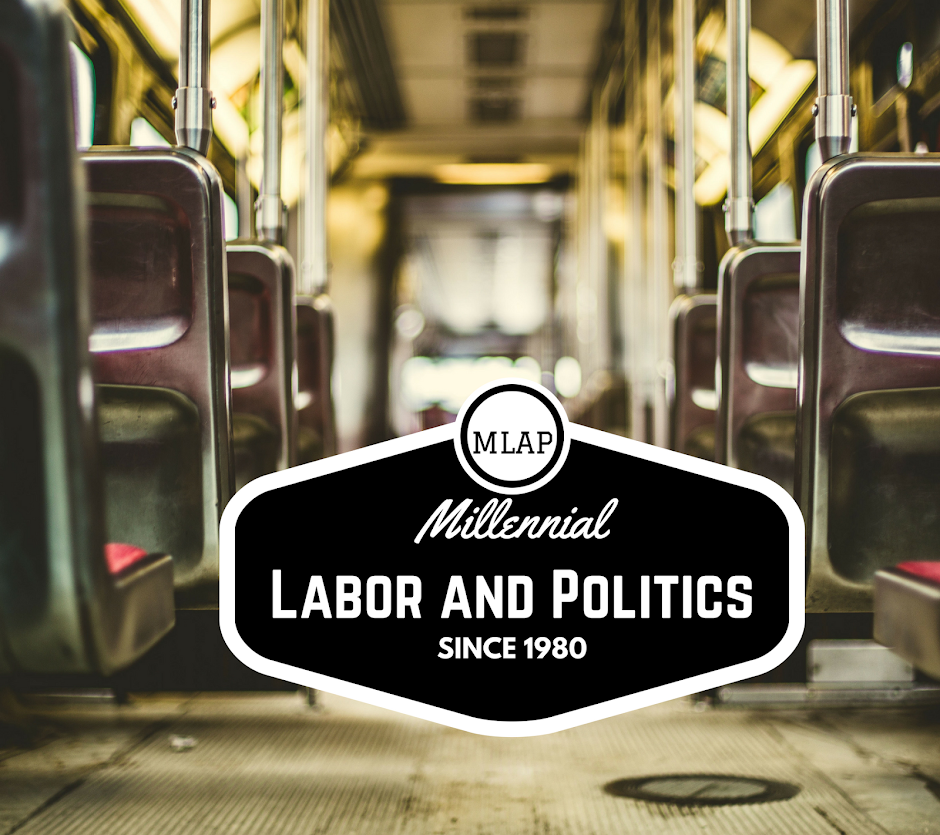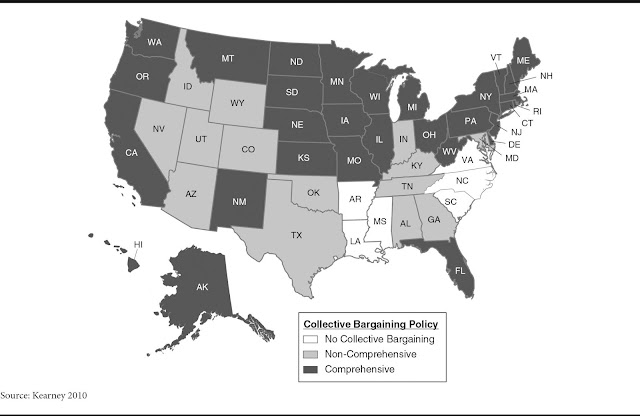Collective bargaining is defined as the negotiation of wages and other working conditions by an organized group of employees. While individuals will try and argue the case for a non-union private sector, the case for public sector unionization is almost undebatable.
Private-sector unionization is mainly covered under the National Labor Relations Act, or NLRA. However, public-sector unionization is generally under the scope of specific states, and even local jurisdictions at times. This creates an almost mandatory symbiotic relationship for public sector unions to get involved politically, as it can become a fight to just survive, let alone thrive. The map below shows a general layout for the United States, which displays the laws as they pertain to each state and their public-sector unions. It's important to note that teachers don't have the same CBA laws that police and firefighters have.
So what does collective bargaining, or lack thereof, do for these states? The answer to that depends on where you live and what line of work you are in. For example, a firefighter may be covered by a better insurance plan that they have collectively bargained for throughout their contract. Since firefighters are 156% more likely than the average citizen to get some form of cancer in their career, their medical needs are different.
Still having a rough time grasping collective bargaining and how it's beneficial? The easiest way is to say that when collective bargaining is allowed, it lifts up everyone's wages. I am a visual learner, so here is a visual teaching moment.
So are you wondering how to read this figure? It shows a hypothetical wage distribution of a population of 56 wage-earners before the introduction of a minimum wage. The level of wages is on the horizontal axis, and the number of wage earners is on the vertical axis.
We see the full range of market wages, including a relatively small proportion of workers with extremely low pay on the left end of the wage distribution. For example, 1 employee has a wage of 1$, 2 employees are paid 3$, while 5 employees receive wages of 8$.
The yellow circle called the “minimum wage zone” shows that a minimum wage should in principle remain targeted at the lowest-paid employees, to eliminate “unduly low pay”; the blue circle is the “collective bargaining zone” and illustrates the principle that collective bargaining can be used to set wages above an existing floor.
I hope that this little post has communicated that collective bargaining is both beneficial to everyone and a goal that every state should strive for. If you are involved with your union or politics, perhaps this is a conversation subject to talk about with other members!
As always, any questions, feel free to ask.
-B




No comments:
Post a Comment